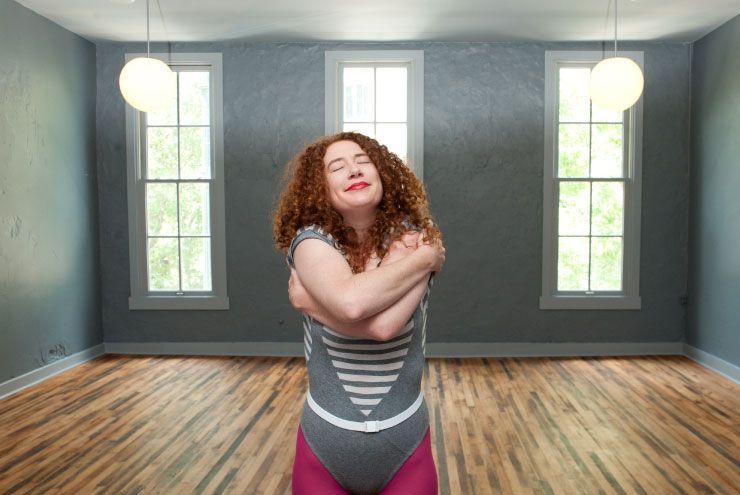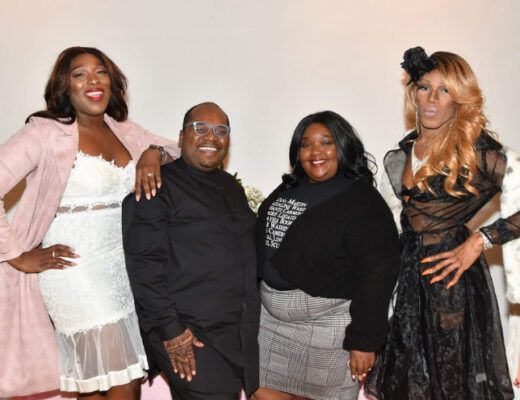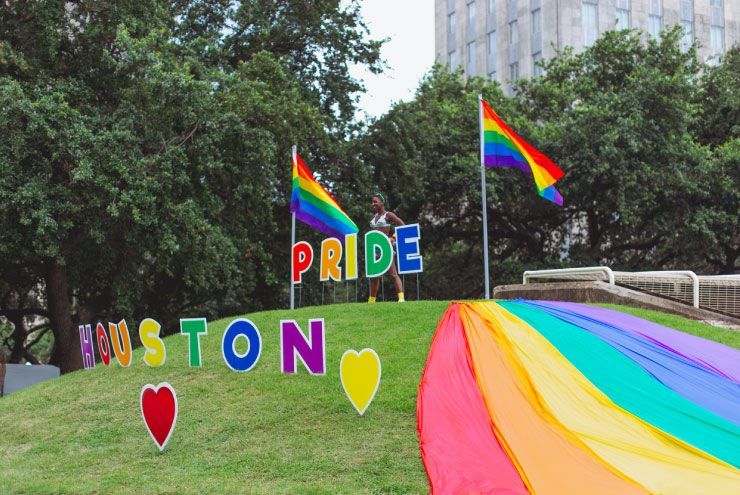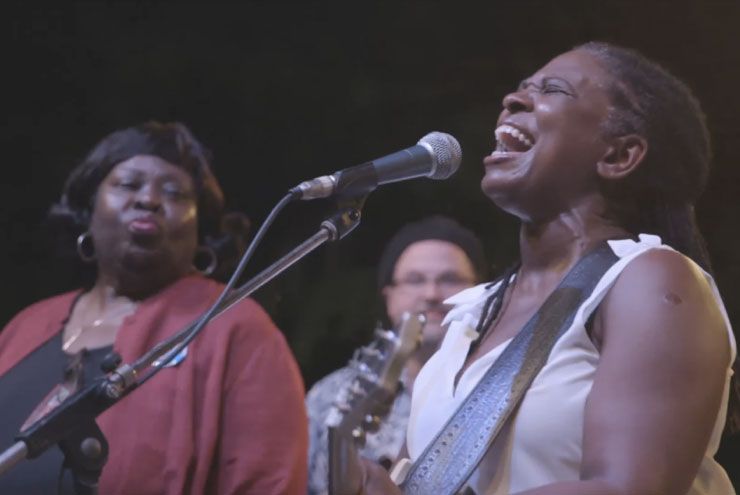By Kelly Marshall
Erica Nix has been a bright and raucous force in the Austin community for well over a decade. Her performance art, beloved photography, and work as a queer and trans-inclusive, body positive activist and personal trainer is well-documented: from the multitude of activist rallies and demonstrations she’s supported, to being a regularly featured artist at OUTsider Fest and aGLIFF, to winning an Austin Critics Table Award in 2016 for best independent project and Austin Chronicle’s Best Body Positive Ambassador in 2016 and Best Personal Trainer Award in 2017 and 2018. However, aside from a miraculous encounter with her idol, Richard Simmons, Nix’s multifaceted brilliance as a queer artist, activist, and personal trainer has largely flown under the national radar—until now. Nix, who is the proud owner of Transform Fitness (one of the only LGBTQIA-focused gyms in the country) has a lot to say. Read on as Spectrum South feels the burn with Erica Nix!
Kelly Marshall: Tell me how your career as a personal trainer came to be and the evolution of your work and this space from its inception to its current incarnation of Transform Fitness.
Erica Nix: I used to dance for a punk rock band where instead of go-go dancing or dancing in this cute, sexy way, I would do aerobics while drinking beer and smoking cigarettes. During the finale, I would weigh myself and get pissed off that nothing had changed. I’d break the scale and throw a huge fit by humping food and spraying Cheez Whiz on people. It was a lot of fun! Also, I was literally exercising the demons out of me. I was saying “fuck you” to all of the voices in my head telling me that my body was not enough. The band ultimately moved in a different direction, and I started doing public space workouts that eventually grew into a web series called Workout with Erica Nix! The web series was about making workouts silly and fun, and giving queers visibility.
I think that was about the time that I started becoming aware of your presence in Austin. Someone in my friend group shared one of those videos on social media and I was like, “Who is this person?!” You guys were on the top of a parking garage in the old Whole Foods parking lot and there was this whole Ethel Merman situation, but with aerobics!
Yes! That was so fun—it was a Dance Jog song that we decided to make into a video. The YouTube videos came from this whole cycle where I’d host classes in these physical spaces like parks or bars like Cheer Up Charlies, and people would learn the dances and we’d go, “Let’s make a video of this.” The videos would then get likes, people would look at them, and they’d say, “Oh, I want to be a part of this!” and they’d come to the class. My best friend and art partner, Jessica Gardner, made those videos a reality—she was the one who shot them and edited them together. A dance studio then asked me to start teaching regular classes in a designated space, so I started doing that, and more people came. Then the Center Spot opened up on North Loop, and my classes expanded to three times a week there. Workout! started to become really popular and that’s where Class Transitions started. Eventually, the Center Spot closed. The inspiration behind Transform was that I had started to realize that the queer and trans folks that were coming to Class Transitions weren’t just there for fun anymore. They were starting to rely on me and that space for their personal physical fitness needs and for their community. I started worrying that I didn’t know enough about physical fitness. So, I went and got my personal trainer education and certification. When the Center Spot closed, I didn’t want that space to be lost because I saw that there was a real need for it. I wanted my friends, my clients, and my queer community to have a designated space where they could work out. So, I opened Transform.
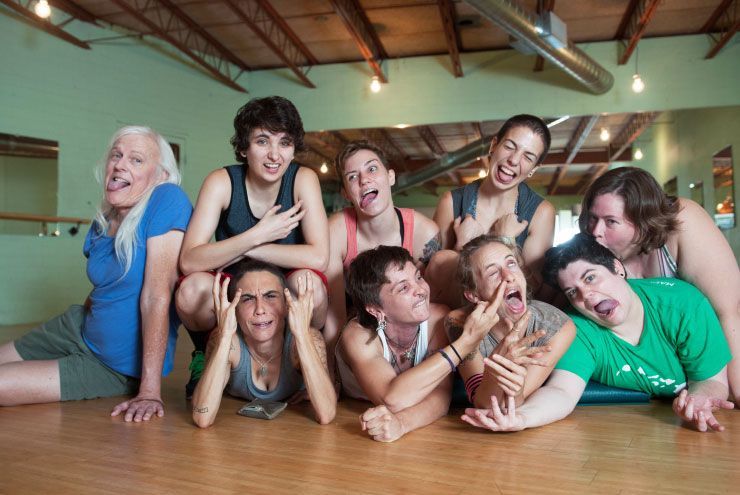
“I wanted my friends, my clients, and my queer community to have a designated space where they could work out.” -Erica Nix. Photo courtesy Erica Nix.
That leads me to my next question. What do you think is the biggest benefit of queer and trans folks having their own space to work out in?
It’s so individual. I can’t speak for anyone else, but what I’ve noticed is that when queer and trans folks are in a non-queer-specific space, they compare themselves to the normative physical culture and that can feel really oppressive. It can bring up a lot of body image issues and take the focus away from the goal of taking care of yourself. I don’t think it’s just a queer or trans issue either—I think everyone struggles with body image. In Class Transitions, people feel safe enough to talk about their experiences. There’s no better place to tell a room full of people that you’re about to have gender affirming surgery, or talk about an HRT injection bruise, or whatever. You know walking in the door that everyone shares your experiences and it’s very sympathetic and supportive. It’s unique and it’s a positive place. It’s not just about getting fit either. You know?
It’s about community.
Yes, exactly. Honestly, when I first started out, I had a lot of normative ideas about this work. I had this idea that I was helping people shape their bodies in the ways that they thought they wanted. The more I work with people, the more I find that, yes, that’s what gets you in the room, but what makes you stay is feeling better, healthier, caring about yourself, and being in your body. As it turns out, a lot of those visual goals that get people in the door end up becoming secondary to how this space and taking care of themselves in general makes them feel! It works for some people, but in general, if those aesthetic goals are the only things that are motivating you to work out, it’s not going to last.
What would you say to someone in the LGBTQIA+ community who has significant fitness goals for 2019? What should they do to succeed in reaching those goals?
Any trainer will tell you to make achievable goals. I think that choosing something sustainable is the way to go. It’s so easy to burn out when you go, “Five days a week! One hour a day!” Is that going to work out in the long run? Probably not. You’re more likely to succeed if you start out just one day a week. And then go two days the second week, maybe stick with two days a week for a month. The second month, go up to three days a week. And if you’re killing it and loving it, you’ll naturally gain on that. But if you go crazy in the beginning, the potential for burnout is very high.
Another thing to ask yourself is, what do you want your life to look like? If you are very motivated toward a specific aesthetic goal like six pack abs, recognize that you may spend a significant amount of time in your daily life working out and thinking about what you’re eating. So, just think about where you base your quality of life. You may have a huge shift in your quality of life when you stop eating a muffin every morning for breakfast, or give up soft drinks, or whatever it is. Start small. But you know, I’m personally gonna eat that muffin!
Also, when it comes to body image, especially as you get older and change, it’s like a never-ending battle. It was Aydian Dowling who was talking about how he focused on getting his chest just perfect, and then he just started moving down his body to the next thing. So, there can be this fixation on never being good enough, physically. Be careful of that.
One thing I can advise—if you are making a point of losing weight or gaining muscle and you’ve noticed a plateau, make sure you’re not doing the same thing week in and week out. Change it up, diversify your workout. That’s why people see personal trainers, so that we can implement those changes for you and take the guesswork out of reaching your goals.
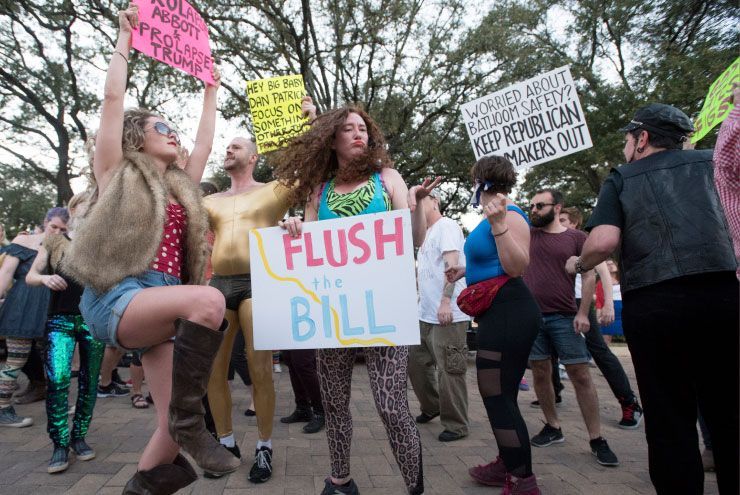
“It just feels so huge to walk into a space that is making you a priority and trying to understand how all people feel.” -Erica Nix. Photo by Erika Rich.
What changes do you want to see in the fitness industry so that it’s more inclusive of the queer and trans community?
Implement gender-neutral bathrooms and changing rooms. Just putting those in there makes everyone think. It just feels so huge to walk into a space that is making you a priority and trying to understand how all people feel. To me, that would set the expectation, without even having to necessarily use explicit language. Because then they’d know that prejudices aren’t welcome here—that this place has made an effort to welcome everyone. I think that would be huge.
And what about the personal trainers, in terms of education? What would be a baseline expectation around inclusivity?
Trainers are just like doctors, they’re all so different. There are going to be assholes and there are going be really awesome people. And honestly, when I went into my personal trainer education program, I was expecting to be surrounded by stereotypical gym rats. That wasn’t the case. Unfortunately, I was surrounded by a lot of fatphobic people. And that would be where I would start. A general education on intersectional body positivity. How about making all the trainers read Your Body is Not an Apology? I would love to open every trainer’s eyes. But it feels pretty hard, based on how some people just discriminate against different body sizes and shapes. That book covers a lot. You know, it’s a learning process. I’m a cis woman who still makes mistakes and is learning all the time. Even when I was first really interested in this, I was still very ignorant, but we have to start somewhere.
For more information, visit transformfitnessaustin.com and follow Workout! With Erica Nix on Facebook, Instagram, and Twitter.


